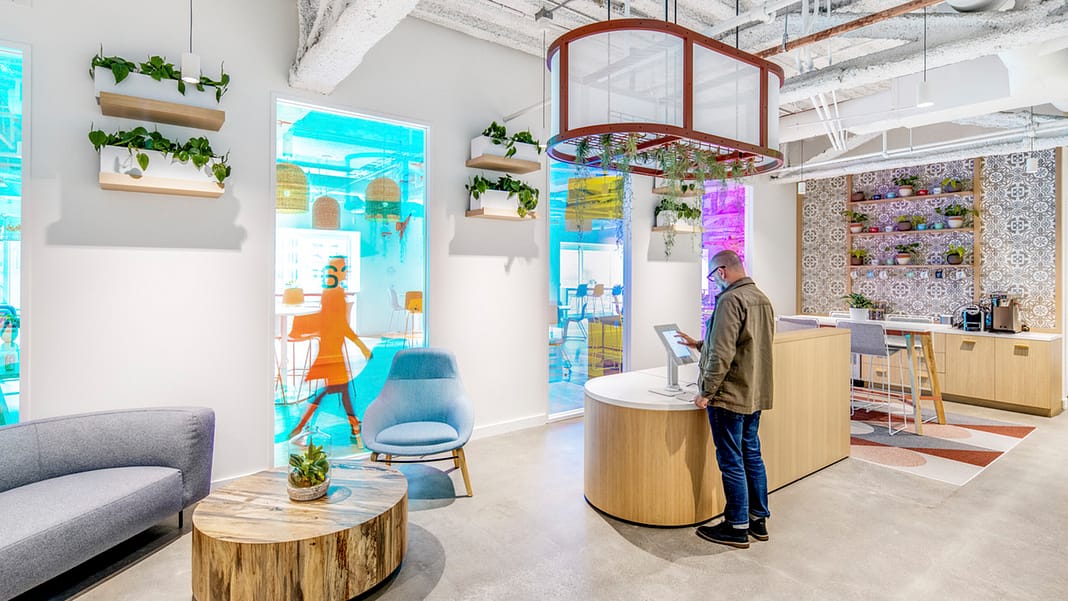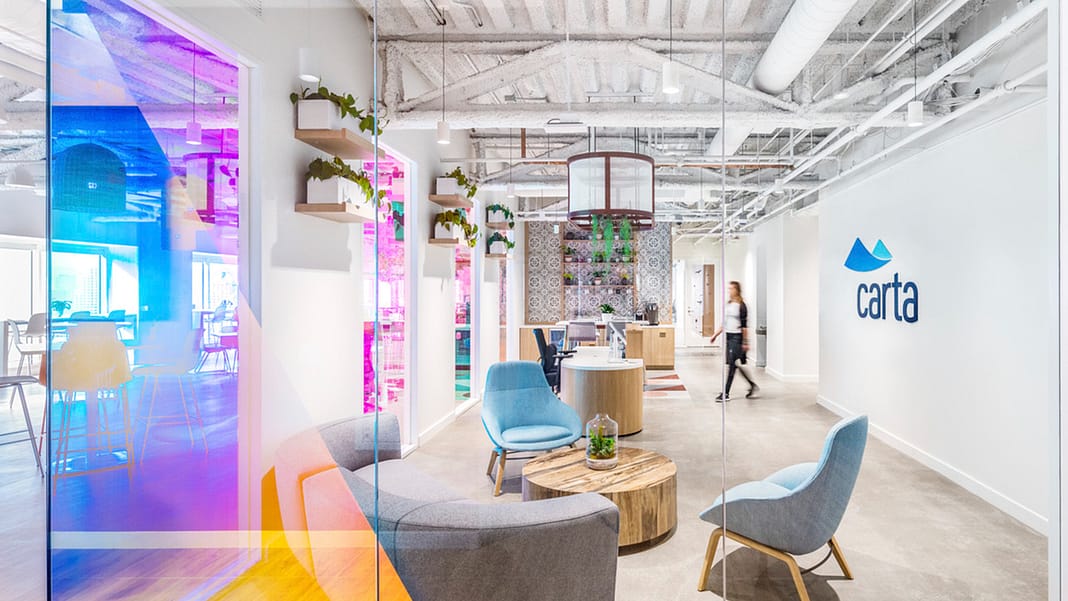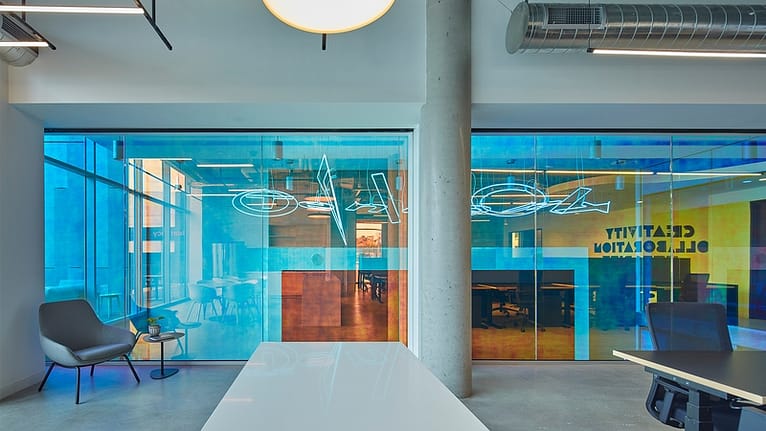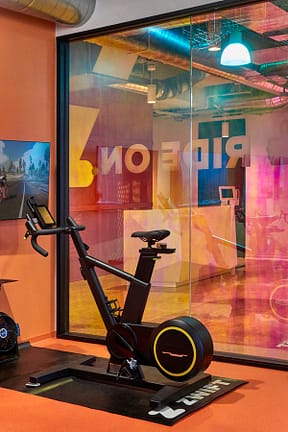For interest, engagement, aesthetics, a touch of mystery, and definitely fun, dichroic glass is increasingly used as a design feature at the workplace. But what is it?
In Greek the term dichroic means two-colored, a fitting moniker for a glass that changes color depending on lighting conditions and viewer position. Micro layers of quartz crystal, metal oxides, and glass are stacked, then vaporized in a vacuum chamber and applied to the surface of glass—there can be as many as 30 layers, yet the overall coating is very thin—to create shifting color structures. The multiple nanoscale layers of the glass interacting with different angles of light produce different colors with a notable iridescent quality.
Skillfully integrated into a design, dichroic glass achieves different objectives. The IA portfolio offers inspiring applications.

Photography © Jason O'Rear.

Photography © Jason O'Rear.
Carta, San Francisco
For technology company Carta, transparent dichroic glass at the wall between reception and the multi-purpose room displays a range of shifting colors—red, orange, purple, blue—for staff and guests moving within reception. But those moving in the multi-purpose room see only intriguing color-changing shadows within an opaque wall.

Photography © Benny Chan.

Photography © Benny Chan.
Tencent America at Playa Vista, Los Angeles, CA
At the double-height lobby, a two-story wall of dichroic glass creates a shifting and unpredictable display of color, complementing a custom white neon light fixture at the ceiling that spells out Tencent. Dichroic glass is seen at the interior, adding interest to an open work area.

Photography © Garrett Rowland.

Photography © Garrett Rowland.
Zwift Headquarters, Long Beach, CA
At a gym for testing and quality control processes—the company makes an app that lets cyclists, runners, and triathletes train indoors and compete in a game—a large glass window covered with dichroic film gives employees, visitors, and recruits a glimpse of what goes into making the game. The design of this project garnered an Interior Design magazine 2021 Best of Year award.

Photography © Sam Kittner.

Photography © Sam Kittner.
Confidential Client, Crystal City, Arlington, VA
Dichroic glass adds interest to a corridor with casual seating, ideal for conversation or work. A panel of dichroic glass suspended above a coffee bar, serving both staff and the public, changes colors in response to movement.
Dichroic glass also shields the elevator lobby and is used at other locations within the design, appealing and viewable from the building exterior.
Final Thought
The use of dichroic glass is very project specific. Depending on project goals and brand, it can enhance and enliven a human-centric workplace environment. Overall, the creative applications of dichroic glass are many and varied. It is used for jewelry, decorative bowls and plates, furniture, tiles, sculpture, and other works of art. In a workspace setting it not only contributes to the user experience but can be enjoyed as an interesting work of art in itself.
